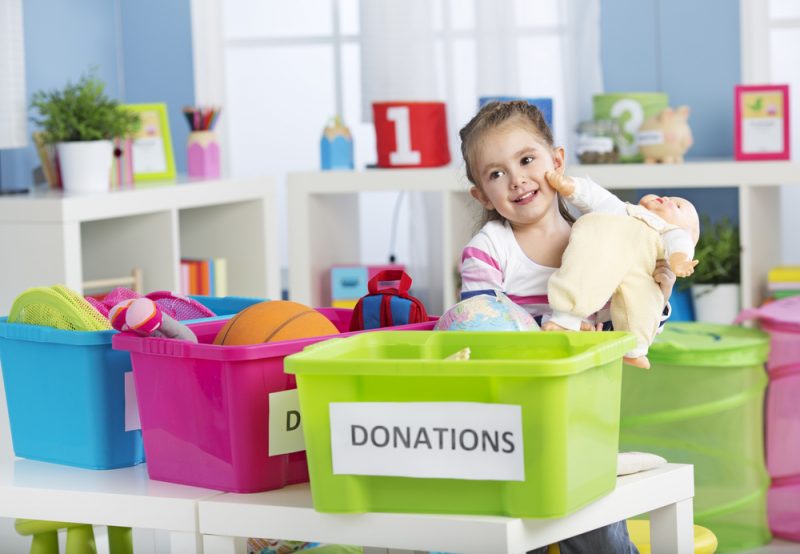
Gratitude is about focusing on what’s good in our lives and being thankful for the things we have. Gratitude is pausing to notice and appreciate the things we often take for granted. Gratitude is about taking a moment to reflect on how fortunate we are when something good happens — whether big or small.
With Thanksgiving around the corner, it’s a good time to sit down with our families to reflect and be thankful for our many blessings. But for those with preschoolers who are self-centered by nature, trying to teach them gratitude at this age seems counterintuitive.
Dr. Sumru Bilge-Johnson, a child and adolescent psychiatry specialist at Akron Children’s, begs to differ.
“Kids can learn gratitude and empathy even at this young age,” she said. “They can begin to understand how others feel about them and how their behaviors impact others.”
Even children as young as 1 to 2 years old can begin to grasp the concept of gratefulness by learning to say thank you. By age 2 to 3, kids are more articulate and can talk about being thankful for specific objects, such as their parents, pets and siblings. By age 4, children can understand being thankful for more than just material things, such as acts of kindness, love and caring.
But there’s more to being grateful than just raising polite, pleasant children. Studies have proven grateful children are happier, more optimistic and have better social support. In addition, grateful kids are more connected to theirs schools and community.
“When kids feel and express gratitude and appreciation to the people in their lives, it creates loving bonds and builds trust,” said Dr. Bilge-Johnson. “When kids are thoughtful and helpful, it boosts their self-esteem and happiness, and diminishes stress and depression.”
Being grateful is a learned behavior, however. It doesn’t come naturally to children. Dr. Bilge-Johnson offers 10 ways you can help your kids build an attitude of gratitude and make giving thanks — at Thanksgiving and beyond — their new normal.
Say thank you.
First things first, teach your children to say thank you until it becomes a part of their vocabulary. Start by teaching them to be thankful to the people that serve them, including parents, grandparents, teachers, caregivers, friends, and the list goes on.
Be a role model.
Like anything, when you’re teaching your child a concept, it’s best to model it. Kids are listening and paying close attention to our actions. So, make sure you’re saying please and thank you to the cashier at the grocery store or the clerk at the bank, and especially when you’re talking to your kids.
Encourage family participation.
Encourage your kids to take part in the family’s daily functions. When kids help set the table or put dirty clothes in the washer, they realize it’s not easy and can better appreciate the work that’s being done for them.
“The temptation to do it yourself is there,” said Dr. Bilge-Johnson. “But, the more you do for them, the less they will appreciate your efforts. Kids need to pitch in to gain a perspective so they won’t take your efforts for granted.”
Incorporate role play.
You can use role play to teach your kids about kindness and caring. For example, they can teach their stuffed animals to say thank you, or maybe their toy animal is hurt and they can show kindness by helping it.
Read books.
Choose books that offer messages about gratitude, such as “The Giving Tree,” “Have You Filled a Bucket Today?” and “The Rainbow Fish.” You can reference these stories in real-life situations to teach your child about giving, sharing and being thankful.
Volunteer.
Get kids involved in charity events or community service. Not only does it give kids a role in helping others, but it also allows them to see with their own eyes that not all kids have what they have. We can tell them about kids less fortunate, but it doesn’t always leave a deep mark.
Even preschoolers can contribute by picking up sticks for a sick neighbor, ringing the Salvation Army bell around the holidays or donating some of their own toys or clothes to kids less fortunate.
Practice saying no.
It’s important to have some no’s in between all the yeses because it’s impossible to feel grateful when your every wish is granted. Kids need to understand that they won’t get everything, so when they do they will be grateful.
“Giving kids everything they want is a disservice,” said Dr. Bilge-Johnson. “It doesn’t prepare them for life because they won’t get everything they want in life. It’s important kids know how to deal with ‘no’s’ and learn to be satisfied with what they have.”
Discuss gratitude daily.
It’s good practice to get into a routine of discussing the “roses” of the day and the “thorns” of the day. Whether it’s over the dinner table or at bedtime, it teaches kids to be thankful for the good things that happened that day. Plus, you can discuss ways to help them overcome the challenges of the day.
Be optimistic.
Teach kids to see the bright side of things. Positive emotions can have a big impact on kids’ lives, leading to happier, less stressed and more connected children.
In addition, positive emotions are more likely to lead to positive actions. When we feel grateful for someone’s kindness toward us, we may be more likely to do a kindness in return.
Celebrate gratitude.
In addition to your child’s Christmas list, make a gratitude list. Ask your children to write down what they’re thankful for in their life.
“These activities teach kids that we can’t take anything for granted,” said Dr. Bilge-Johnson. “It encourages kids to pay attention to what they’re thankful for, the good things that happened and what they’ve accomplished in the past year.”










